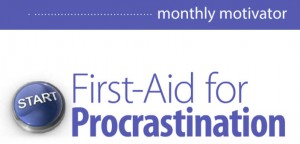Ben Phillips, Nicole Piper, and Keith Trimels… Although these names might not sound familiar, they share the same goal you have: to make a great living as a writer.
And you know what? Each one has reached that goal in one way or another…
Ben Phillips went from driving limos to pay the bills to a full-time position as a copywriter working alongside some of the legends in the business.
Nicole Piper was able to reclaim her freedom and independence following a layoff and divorce, and now has loads more time to spend with her son even while maintaining a comfortable income.
And Keith Trimels splits his time between his home state of Wyoming and Mexico, where he writes from a sailboat in the Sea of Cortez for clients around the world.
Their stories are exciting, inspiring, and true.
But the question I always get asked is how…?
How were they able to turn their dreams of making a living as a writer into reality?
Are they just luckier than most people?
Hard work and determination definitely played a role. But they also followed the steps that AWAI has been teaching for 20 years… the exact same steps I’m going to share with you today.
Spoiler alert: These steps aren’t complicated. They may even seem a bit simple on the surface…
The key to success, however, lies in committing to getting through them.
So if you’re ready to turn your writing dream into a reality and make a great living as a writer, let’s dive in…
Step 1: It Works for Yeti (and 32 Million Others)
This is where it all begins: understanding just how big the opportunity is… and why writers get paid so much money.
The why is simple: Copywriters are needed wherever money is being exchanged for products and services.
This exchange could be between companies when a company sells to a business instead of to a consumer — otherwise known as business-to-business, or B2B.
Or, it could be directly from the company to a consumer — otherwise known as business to consumer, or B2C.
Or it could be both!
A company named Yeti, for example, manufactures high-end coolers…
They sell their coolers directly to consumers (B2C) — you can buy a cooler on their website. And they promote to sporting goods stores (B2B) — you can buy a cooler at a store.
But because the two buyers are different and are making different purchasing decisions (a consumer buying one cooler versus a company buying thousands to sell in their stories nationwide), they require two different sets of marketing materials to explain
- what the product is;
- how it solves a customer problem, need, or wish;
- how it works;
- why it’s the best solution and value;
- how much it costs; and
- how to order it.
And they need to convey this information in a variety of ways so they can reach their prospective buyers and move them to buy.
Usually referred to as “marketing channels,” these various methods more than likely include a website and possibly a social media presence, plus an e-newsletter, print materials, maybe case studies, white papers, videos, and more.
At last audit, we identified 75 different kinds of projects companies hire writers to write! (You can get all the details — including the average fees — in our pricing guide.)
There are 32 million companies in the United States alone… all of which require marketing to sell their products and services, all of which need numerous marketing channels, and therefore all of which have multiple needs for copy and content.
Step 2: What Would You Ask a Genie?
Now that you know the many opportunities that exist, it’s time to focus on what you really want from your writing.
Are you looking to just earn some extra cash on the side?
Maybe some “mad money” to pay for vacations, spa visits, unexpected repairs to your car, or jujitsu classes with your friends? You probably want to work only a few hours every week… or maybe just on the weekends.
Are you looking to supplement your income?
Maybe you enjoy your job — or at least enjoy the predictable income — but would like to make more money. Maybe you want to add another $20K to your bank account every year, just to relieve some of the stress caused by unexpected bills or previous debt. You’re willing to spend a bit more time on writing, maybe a couple of hours each day.
Or are you looking to replace a full-time job and start a new career?
Maybe you’re like Heather Robson, who wanted flexible hours so she could home-school her daughter. Or Steve Coombes, who had a great six-figure job with a Fortune 1000 company but didn’t have time for his family. You’re willing to treat this like a new career and spend the time and energy to really go for it.
And your intention can evolve…
Maybe “right now” you want to make a bit of extra cash to prove to yourself you can do this. And then once you see you can, you’ll transition into wanting to replace your career and write full-time.
You can accomplish any of these goals…
The key is to be honest with yourself before moving forward so that you can focus on the opportunities that match your income goals and the level at which you want to be involved.
Which leads us to the next step…
Step 3: Time to Play Favorites…
Once upon a time there were only a handful of ways to make a great living as a writer… the biggest one being direct mail (the things you get in your mailbox).
Today, though, there are dozens of ways…
Short copy, long copy… sales-y, nonsales-y… projects that you write on retainer (such as newsletters, social media posts, and editorial), projects that you write for yourself (such as money-making websites, ebooks, and information products), projects that are great for journalists (case studies), projects that are great for storytellers and screenwriters (video sales letters), and on and on…
The challenge won’t be finding great-paying writing assignments. The challenge will be choosing the ones you want to start with.
So start exploring, and determine which ones are of interest to you. I always recommend that writers use the AWAI catalog as a research tool…
If there’s a great way to make a living as a writer, we likely have a training program on it! And each training opportunity has been carefully selected and researched to make sure it matches the needs of our members… We dig to find out the size of the opportunity, what the projects entail, going rates, who the clients are, and more.
So if you ever want to know more about a particular project, head on over to the catalog, find the program, and click “learn more.” You’ll have a good understanding in no time.
Just remember, the key isn’t learning how to write all of them…
It’s choosing one or two to start, and then going from there. Once you get up and running, if you’re asked to write a project you don’t know how to do (assuming you want to do it), just tell the client you have time in a few weeks and head back to the catalog…
You can quickly download our training program and be ready to tackle it in no time.
This next step could also come before the last one, but I find that writers like to know what they’ll be writing first. But either way, who you’ll be writing for is just as important… After all, that’s how you make money!
Step 4: Swiping Right Isn’t as Easy as It Looks
Remember, there are 32 million companies in the United States. So your goal here isn’t to find companies looking for writers… Your goal is to determine which handful of companies would be a good fit for you, and where you’d add the most value.
There are lots of ways to approach this…
For starters, you can think about the buyer you already are.
What products and services do you purchase? For example, I’m a mom. So for a while, I was obsessed with baby safety and products that made my life as a mom a bit easier (and less scary). Identifying companies who manufacture and/or sell products to me would be easy!
You can think about interests…
Maybe you’re into health and fitness… or you love investing and researching the next “big stock”… or you’ve taken martial arts for 15 years and understand exactly who martial arts studios are trying to attract and how they typically market to them.
Or you can approach it through your past experience…
Let’s say you’ve been working as a solar panel installer for the last 10 years. You likely know all the players in the industry, both the companies who sell solar panels and many of the companies who manufacture the parts. No matter what your past experience — pilot, teacher, nurse, mechanic, lawyer, plumber, veterinary technician, whatever — there’s an industry full of companies who need writers.
However you decide to approach it, your goal here is to choose a “niche” — or industry of companies — and research a list of potential clients. (We recently did a free webinar that walks you through picking a niche — you can access the playback here.)
I’ll warn you, this is actually the hardest step for new writers. But it’s the step most of our success stories say had the biggest effect on speeding up their success.
And once you know who you’re going to write for and what you’re going to write, you’ll know how to identify exactly what you need to do next…
Step 5: Practice, Young Grasshopper
This step is pretty self-explanatory, right? You make a list of the skills you need to do the job.
Maybe you’re totally brand new and have never written a lick of copy or content for a business. You’ll want to start with AWAI’s Accelerated Program for Six-Figure Copywriting to ensure you have a foundation in writing persuasive copy and content.
And then maybe you’ve decided you want to write case studies, white papers, and how-to videos for the solar technology market. Great! Let’s say you have experience writing case studies… but not the other two. You know exactly what skills you need!
Or maybe you’re going to write for the financial market, and you’ve taken the Accelerated Program so you’re confident you have a great foundation…
But you see the companies in your chosen industry are using a lot of video sales letters (VSLs) and online marketing efforts, so you want to learn how to write VSLs and how to write for the web.
See how that works?
By listing out the skills you need, you’ll ensure you won’t waste any time and money. And you’ll make sure you can actually do the projects when the clients say “Yes!”
Which brings us to the next step: where you actually find clients…
Step 6: Bespoke Money-Making at Its Finest
Now things get really fun…
And if you think I’m kidding, I swear I’m not. If the thought of “marketing yourself” sounds scary, it signals to me that you’re just uncomfortable with the unknown. And I can fix that…
We have loads of free tutorials on various ways to market yourself like this one on LinkedIn and this one on five ways to get clients to come to you.
And every program we publish at AWAI teaches you not only the skills, but also how to land clients looking to hire writers for that particular kind of project.
Just remember it’s always all about the client…
So make sure you’re focused on who you’re targeting and what you can do for them.
And know there’s no “perfect” way to market yourself…
Joshua Boswell — one of my favorite self-marketing experts — always says the “perfect” marketing method is the one you’ll actually do. So take your time to explore the various options, and pick the ones that feel right for you!
Then once the clients start coming in, it’s time to get down to business…
Step 7: Elbow-Greasing the Words
You’ve got the skills, so you know how to do the assignment. Just make sure you talk to the client about what they want and expect up front. What’s the goal of the project? How will they measure success? The more you can find out up front and align your work with the client, the more smoothly the project will go…
Know there will always be a learning curve. Just do your best, be professional every step of the way, and learn everything you can from the experience.
And remember, there are so many potential clients out there…
You could mess up your first dozen assignments and still be just fine.
But once you finish up the assignment, it’s time to submit your invoice and move to the next step…
Step 8: Not Just Every Other Friday
Check, PayPal, direct deposit… Your client will likely have a preferred way to pay you. You’ll just have to determine how you want to handle your income…
You might also get paid on a per-project basis so you have checks coming every week… or in a lump sum payment to kick off every month.
You can research this online, or we have a program called Freelance Writing Business Success that goes through some of the basics of running a freelance business. Because every person’s situation is different, we recommend also talking to an accountant.
But having money coming in is a good problem to have…
Step 9: Loads of Celebration Cake in Your Future
Now it’s time to celebrate! This is one of those steps that we often forget once we’re successful. We’re quick to look forward to the next big win.
But I urge you to celebrate every win… your first paid assignment, your first paycheck, the first time you raise your fees, every time your earnings are higher than the month before… all of it.
And be sure to share those stories with us. Our website is full of success stories, case studies, and testimonials from AWAI members who have let us celebrate with them on their journey…
It’s our favorite part!
In fact, I’m hoping the next time I write an article like this, I can share your story about how you turned your writing dream into a reality and the success you’ve had as a Barefoot Writer.
Editor’s Note: If you’re ready to learn the valuable skill of copywriting, take a look at AWAI’s popular Accelerated Program for Six-Figure Copywriting. It’s based on the original teachings of Mark Ford and has been revised and improved a dozen times in the past 20-odd years with the help and insights of many of today’s best copywriters.






